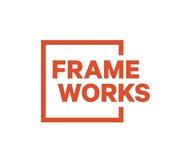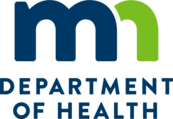|
Public Health System
Transformation Update
A monthly update from the Joint Leadership Team sharing how, together, we're creating a seamless, responsive, publicly-supported public health system in Minnesota

|
|

A seamless, responsive, publicly-supported public health system: What does that mean?
We envision a seamless, responsive, publicly-supported public health system that works closely with the community to ensure healthy, safe, and vibrant communities. This system of state, local, and tribal health departments will help Minnesotans be healthy regardless of where they live. – Joint Leadership Team vision
When we dig into this vision, what do “seamless,” “responsive,” and “publicly-supported” mean, and what might they look like in a transformed and strengthened governmental public health system in Minnesota?
We covered seamless and responsive in the May and June newsletters:
May 2024: What does a seamless public health system look like?
June 2024: What does a responsive public health system look like?
This month, we consider "publicly-supported."
A publicly-supported public health system has the trust and support of partners and community, and is accountable to itself and to others, in addition to having adequate funding and staffing to be effective.
What could this mean?
- “Communities trust public health and invite engagement and collaboration.”
- “The public understands how public health keeps them safe.”
- “People know and understand what we do and support it through partnership or funding.”
- “Decision-makers support public health policies.”
What might this look like?
- Adequate funding to support public health
- Consistent messaging that explains the role and value of public health in ways that people outside of public health understand and identify with
|
|
Do you see examples of a seamless, responsive, publicly-supported public health system in your community? Let us know! |
|
New communications toolkit: Inspire your partners to support and strengthen public health
It’s no secret we struggle to communicate about public health.
Public health experts, elected officials, and community members work together to help Minnesotans and their communities to be their healthiest, but we struggle to explain that work in ways that are clear and relatable, that people outside public health can understand and get behind.
Communicating about our work—what public health is and the value it provides to our communities—is an important part of growing support for public health among the public and decision-makers.
If people don’t know how public health helps them get ahead in life or how it helps their community to thrive, they’re less likely to speak up when public health funding is threatened or defend public health work when it’s portrayed negatively.
The Joint Leadership Team worked with Hattaway Communications, a nationally-renowned, independent communications firm, to develop a toolkit for Minnesota that can help you talk about your work in ways that are centered in shared values, foster connection, and open the door for conversation.
- The methods in this toolkit are for everyone, not just communications staff—in fact, they can help leaders and staff who don’t have communications staff on hand.
- These techniques can help you avoid using jargon when describing your work or focusing on minutiae that won’t resonate with your listener.
- The toolkit helps you consider who you’re talking to, the hopes and values that drive them, the goals they’re working toward, and how your public health work can help them get there.
When you can show someone that your work plays an important role in fulfilling their dreams, they can, in turn, understand why it’s important to support public health.
So far, through training and workshops, nearly 350 people working in Minnesota’s public health system have learned about the toolkit and workshopped messaging tailored to their needs. You may have encountered a toolkit training at the August/September LPHA general membership meetings, a community of practice, or an MDH Café Connect session. SCHSAC members will dig into the toolkit at their retreat in October, and MDH staff can anticipate more training later this year. Staff supporting the Joint Leadership team will keep building workshops and training opportunities in the coming months.
Do you want to feel confident growing support for your work by connecting it to your listener’s hopes and dreams? Check out the toolkit, and look for a training or workshop in your neck of the woods: www.health.state.mn.us/phmessagetoolkit
|
|
Video interview: Relationships create a stronger public health system
At its core, public health is relational work. Our relationships drive our goals and strategies, individually, and also as organizations, sectors, geographies, and more.
Last month, Travis Parker Lee of the Public Health Accreditation Board (PHAB) spoke with three Minnesotans about their role in building relationships, making connections, and breaking ground together toward a transformed public health system in our state:
-
Tarryl Clark, Stearns County Commissioner, Chair of the Minnesota State Community Health Services Advisory Committee, JLT member
-
Nick Kelley, Bloomington Public Health Administrator, Chair of the Local Public Health Association of Minnesota, JLT member
-
Madison Anderson, MDH Tribal Public Health System Consultant
Watch the video: Minnesota: A 21C Public Health System (8:24)
Learn more about Minnesota's Joint Leadership Team: Joint Leadership Team and Subgroups
Issue Briefs | National Association of Counties
In partnership with the de Beaumont Foundation, NACo offers insights and actionable strategies to help county leaders build a legacy of health in our communities—beyond increasing access to clinical care. Explore four briefs and discover how targeted public health investments can transform your community and drive economic growth. |
|
 |
Toolkit| FrameWorks Institute
To appreciate why communicating about public health to other sectors is so important, and also how treacherous it can be, we need to understand how professionals in other sectors think. This communications toolkit for all public health workers and leaders (not just communicators) can help identify gaps and overlaps in thinking between different sectors, and help us strategically focus our framing efforts. |
|
 |
Webinar (recorded) | Act for Public Health
In this free, hour-long webinar, experts from the Berkeley Media Studies Group and Real Language offer framing and communication recommendations to help public health advocates develop and deliver messages on the significance of public health as well as counteract legislation that would undermine public health authority. You can also download tools and worksheets to help you break down a communications strategy. |
|
 |
Live webinar series: October 2024 | Minnesota Dept. of Health
|
Join MDH staff for a free webinar series to learn about ways to prevent and respond to rumors and misinformation. This series will review the impacts of rumors and misinformation and how you can work to prevent, mitigate, and manage them. Module 1: Engaging with partners and networks (Oct. 10); Module 2: Using technology to conduct social listening (Oct. 17); Module 3: Delivering strategic and impactful communications (Oct. 24).
Can't attend these live classes? Check out a free, hour-long recorded webinar from the Public Health Communications Collaborative, When and How to Respond to Public Health Misinformation, inspired by the popularity and utility of the PHCC Misinformation Alerts tool.
|
|
 |
Live webinar series: September-November 2024 | PHAB
Join PHAB for a four-part series of learning sessions on sharing services and resources. As health departments strive to increase capacity, carry out foundational public health responsibilities, and enhance service effectiveness, it can be helpful to explore formal and informal ways to share resources, insights, expertise, tools, and techniques across organizational boundaries. Learning sessions started this month and run through November. |
|
 |
Please note: The views expressed in these resources are those of the specific authors and organizations creating these resources, and do not necessarily reflect those of the Joint Leadership Team, its members, or its represented sectors.
|
|
What are foundational responsibilities?
Why does public health need communications?
Where you live should not determine your level of public health protection.
The governmental public health system has a set of foundational responsibilities it stewards--including communications--defining what needs to be in place everywhere for Minnesota's public health system to work anywhere, as we work toward a more seamless, responsive, and publicly-supported public health system.
Learn more and see a visual framework of how all responsibilities, areas, and capabilities fit together while centering equity: Foundational Public Health Responsibilities.
|
|
Contact a specific member of the Joint Leadership Team
Based on the collaborative nature of this work, please direct any questions or feedback to one of the following.
-
Local public health staff and leadership: Please contact your LPHA representatives currently serving on the joint leadership team.
-
MDH staff and leadership: Please contact the MDH staff currently serving on the joint leadership team.
-
SCHSAC members and alternates: Please contact the SCHSAC representatives currently serving on the joint leadership team.
General questions
For general questions, including about funding, grants, and eligible activities: Please contact the MDH Center for Public Health Practice at health.ophp@state.mn.us.
Not sure who to contact?
Visit Ask a Question: Transforming the Public Health System in Minnesota. Joint Leadership Team members review these questions on a regular basis and respond as needed or requested.
|
|
|
|
|